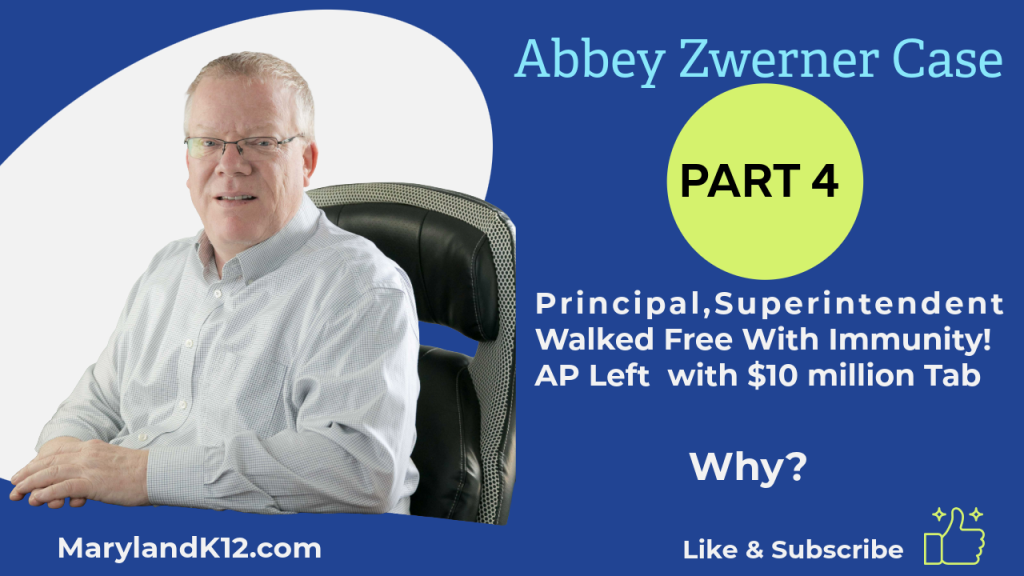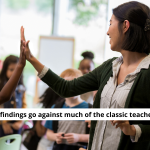
A School Without Bells or Report Cards. Can It Fly? (Opinion)
In The Great School Rethink, I talked about the need to rethink how schools work—top to bottom. Well, the San Francisco-based Red Bridge school offers one evocative approach to doing just that, and I thought readers might be interested in a closer look. Launched in 2020 as a K-8 by a veteran educator who’d previously helped found Sal Khan’s Lab School, Red Bridge embraces a student-centered, mastery-based ethos. Its website reports that tuition varies with family income, with families paying somewhere between $400 and $40,500 for the 2023-24 school year. Do their efforts to individualize work as intended? Can it work on more than an intimate scale? These are the kinds of things I wanted to better understand. And there’s no better person to ask than Orly Friedman, who launched Red Bridge after more than 15 years as a teacher, entrepreneur, and school designer. Here’s what she had to say.
—Rick
Rick: Can you tell me a bit about Red Bridge?
Orly: Red Bridge is a demonstration school designed to build student agency as the foundation for academic and life success. This is in contrast to the traditional model of school, which is designed around compliance. We define student agency as “the ability to set meaningful goals and have the will and skill to achieve them.” We know our program is working when students can set and follow through on their own goals, which is a requirement to be promoted between autonomy levels. We have 40 students in K–5 this fall and are on track to be a K–8 school by 2026. While we don’t aspire to open more campuses ourselves, we do hope to create a shareable model that educators can use to create more student-driven learning environments. The idea behind Red Bridge is to prepare students to be leaders of their own learning, so that their success is in their own hands. In 2018, I left my job to work on designing a school model that would lead to this outcome, and Red Bridge opened its doors Sept. 1, 2020.
Rick: How did you come to this work?
Orly: After college, I joined Teach For America and taught elementary school in the District of Columbia for five years. I worked in traditional schools where much of the student’s success was determined by the school they went to and the teacher they were assigned. Later, I moved to California and worked in a very different school setting—one that emphasized mastery-based learning, individualized pacing, and the development of executive-function skills where students were encouraged to make decisions about their learning. What I witnessed there was students building the work habits to own their success, or failures—essential skills that would last them their whole lives. This made me want to rethink how school could be designed with student agency at the center.
Rick: How do you explain what makes Red Bridge distinctive?
Orly: The traditional education system values compliance and efficiency over agency and deeper learning. This is a problem for a few reasons. First, it’s not preparing students for the world we live in. Students need to know how to set goals, make plans, and follow through on those plans. COVID showed us that students who need a teacher to tell them exactly what to do are at a disadvantage when schools close and learning moves online, whereas students who are used to self-direction can continue to make the most of their learning. A lack of agency can also contribute to anxiety and depression. School can help students develop self-efficacy and combat the rise we’ve seen in both these conditions.
Rick: Could you give an example of how Red Bridge works in practice?
Orly: We’re trying to build students’ sense of control by redesigning the structures of school that typically take that away. For instance, we don’t group students by grade level. At Red Bridge, we group students by “autonomy level,” which is based on demonstrating proficiency in work habits like time management, goal setting, and organization. Students are in charge of their promotion to the next autonomy level. They initiate the process and prove they’re ready to move forward. We have also reimagined our assessments: Students at Red Bridge earn learning credits, similar to scout badges, at their own pace instead of taking traditional tests.
Rick: The idea of badging may be unfamiliar to many readers. Can you say a bit about how students actually demonstrate mastery?
Orly: Like scout merit badges, every learning credit has specific criteria for demonstrating proficiency. We have two types of learning credits: fluency and concept. Fluency credits can be earned by demonstrating 100 percent fluency on a task—whether it’s math facts, labeling a map, or reciting a poem. These are rote and simple to evaluate. Concept credits are more challenging because they require a demonstration of deeper understanding. Students must demonstrate understanding in multiple modalities. For instance, to earn a “character habit” credit, students generally have to act out a given scenario, receive feedback from peers, and reflect on their own behavior through writing. Math credits typically have an oral explanation component, a written representation, and a physical demonstration or illustration. If students are able to show understanding of a concept in all of these ways, they have demonstrated depth of understanding at a high level.
Rick: How do you track these things?
Orly: An important feature of the learning credit system is that students sign up when they are ready to be assessed, as opposed to traditional classrooms in which teachers decide when an assessment will happen for the whole class. Students who successfully earn a credit receive a physical badge that goes in a binder, so that they have a visual of their own progress. On the back end, we document which credits students have earned and attempted along with photo or video evidence of the assessment. We have credits for both traditional academic subjects as well as nonacademic areas. For students to progress in autonomy level, they will need to earn the work-habit credits associated with that level, which is essentially a portfolio demonstrating their executive-function skills.
Rick: What kind of evidence do you have as to whether this approach works?
Orly: We’re a young school, so our sample size is quite small, but we’ve seen many examples of students successfully building agency and driving their own learning. My favorite story is from our second year when we had to unexpectedly cancel school for a day due to COVID. We told students and families to enjoy the day off. Two separate families wrote to me to share the work plans their children had made for their day at home, which included full schedules of learning activities. Students did this of their own volition, almost certainly because it is part of their daily routine at school. What we saw is that it had become so ingrained that these 7-year-olds knew just what to do even without a teacher directing them.
Rick: That sounds great. Do you have any more systematic research or evaluation data?
Orly: We see a positive effect on academic outcomes as well. We have students take benchmark assessments at the beginning and end of every school year as well as the NWEA MAP test. Every year, our student body exceeds their expected growth scores, which aligns with the benchmark data we collect showing about 1.15 years of growth in reading and math on average. Students learn at different rates, and what we also see is students make large leaps when they’re ready. We had a student enter in 2nd grade who did not know their letter sounds, and two years later, they were reading at a 6th grade level, so the neat thing about this model is that there is no capping the growth students can make.
Rick: Obviously, in a lot of states, there’s enormous activity on school choice. What does this mean for Red Bridge?
Orly: As a demonstration school, our goal is to be one of the choices families can make. We hope to explore and refine the elements of our model at Red Bridge and share the pieces that work, ideally building a community around this. The past two years, with the support of Transcend Education, we have partnered with a public district and a charter school in California that have been interested in moving toward more student-driven practices. These collaborations have taught us about what elements of the model resonate and how we might support educators who are interested in this work.
Rick: It strikes me that mastery can be difficult to measure, especially when educators need to ensure that students are mastering state standards. How do you think about such concerns?
Orly: We moved away from the term “mastery” because it does feel hard to measure. We talk about students earning a “learning credit” representing a step on a student’s “learning line,” rather than some absolute understanding. That feels more authentic and also practical. It does take time to create quality artifacts for each learning credit, but I would not say it’s hard to do with mandated standards. In fact, many of our learning credits align with Common Core standards. This system can be challenging because all of these practices require flexible scheduling, highly collaborative teams, and differentiation, which are not easy to come by. But they are absolutely what is best for students.
Rick: Last question. I love what you’re doing here, but I have to wonder whether this requires an intimate, deeply personal, trust-based culture to work. Can this kind of approach work on a larger scale, or should we accept there are limits on where and when it will work?
Orly: It does require trust and it requires district and school leaders to create environments for teachers that are designed with the same elements in mind that we hope to provide for students: autonomy, mastery, purpose, and relationships. These are the elements of motivating work environments and learning environments. Teachers need agency and ownership to replicate that in the student experience. I don’t think school size matters as much as alignment and intentionality. Hopefully, with strong models and accessible resources, we can make scaling student agency a little more likely.
Dig Deeper With Our Longreads
Newsletter Sign up to get our best longform features, investigations, and thought-provoking essays, in your inbox every Sunday.
The MEN was founded by John Huber in the fall of 2020. It was founded to provide a platform for expert opinion and commentary on current issues that directly or indirectly affect education. All opinions are valued and accepted providing they are expressed in a professional manner. The Maryland Education Network consists of Blogs, Videos, and other interaction among the K-12 community.









